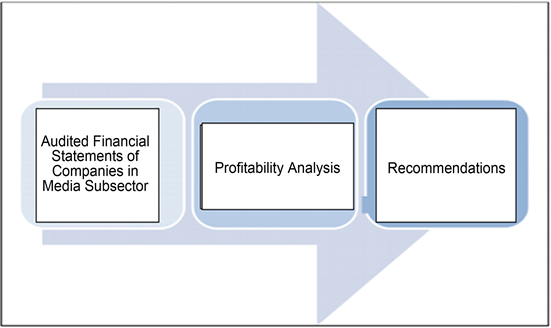In today’s business world, financial statements are crucial for understanding a company’s financial performance and health. They provide valuable insights into a company’s profitability, liquidity, and solvency. However, deciphering these financial statements can be a daunting task, especially for investors and creditors who need to make informed decisions about a company. This is where financial statement analysis frameworks come in. These frameworks provide a structure and methodology for analyzing financial statements and gaining a deeper understanding of a company’s financial standing. In this article, we will explore the various financial statement analysis frameworks, their components, and how they can be used to evaluate a company’s financial performance.
Horizontal Analysis: Comparing Financial Statements Over Time

Horizontal analysis, also known as trend analysis, involves comparing a company’s financial statements over a period of time. It helps identify trends and changes in a company’s financial performance, making it easier to forecast future performance. The most commonly used horizontal analysis techniques are percentage change analysis and trend percentages.
Percentage Change Analysis
Percentage change analysis compares the absolute dollar change in a financial statement item over two or more periods. For example, suppose a company’s revenue was $500,000 last year and $600,000 this year. The percentage change would be calculated as follows:
($600,000 – $500,000) / $500,000 = 20% increase in revenue.
This method allows for a quick comparison of actual dollar amounts, but it does not take into account the size of the company or any external factors that may have influenced the change.
Trend Percentages
Trend percentages, on the other hand, compare each line item on a financial statement to a base period. In this method, the base period is set at 100%, and all subsequent periods are expressed as a percentage of the base period. Using the same example as above, if the revenue for the previous year is set as the base period, the trend percentage for this year’s revenue would be calculated as follows:
($600,000 / $500,000) * 100 = 120% of the base period.
This method allows for a more accurate comparison of a company’s performance over time, as it takes into account the company’s size and any external factors that may have influenced the change.
Importance of Horizontal Analysis
Horizontal analysis is crucial for understanding a company’s financial performance over time. It helps identify trends, both positive and negative, in a company’s financial statements, which can then be used to forecast future performance. For example, if a company’s revenue has been steadily increasing over the past few years, it is likely to continue on an upward trend. On the other hand, if there is a decline in profitability over time, it could indicate potential problems with the company’s operations or market conditions.
Vertical Analysis: Comparing Financial Statements to Industry Averages

Vertical analysis, also known as common-size analysis, compares a company’s financial statements to industry averages. This allows for a better understanding of how a company is performing compared to its peers. The most commonly used vertical analysis techniques are common-size statements and benchmarking.
Common-Size Statements
Common-size statements express each line item on a financial statement as a percentage of a base amount. The base amount is usually the total revenue for the income statement and the total assets for the balance sheet. For example, if a company’s total assets are $1 million and its cash balance is $200,000, the common-size statement would show the cash balance as 20% of the total assets.
This method allows for a direct comparison of a company’s financial statements to industry averages. It also helps identify areas where a company may be outperforming or underperforming its peers. For instance, if a company’s cost of goods sold is significantly higher than the industry average, it could indicate that the company needs to streamline its operations to improve profitability.
Benchmarking
Benchmarking involves comparing a company’s financial performance against that of its competitors. This can be done by analyzing publicly available data or through industry reports. By benchmarking, a company can identify areas where it is lagging behind its competitors and take necessary steps to improve its performance.
Importance of Vertical Analysis
Vertical analysis provides valuable insights into a company’s financial performance compared to its industry peers. It helps identify both strengths and weaknesses, which can then be used to make strategic decisions to improve the company’s performance. Additionally, vertical analysis allows for a better understanding of how a company allocates its resources, providing investors and creditors with a more accurate picture of the company’s financial health.
Ratio Analysis: Calculating Ratios to Compare Financial Statement Items

Ratio analysis is a widely used financial statement analysis technique that calculates ratios to compare different financial statement items. These ratios provide a deeper understanding of a company’s financial performance, liquidity, and solvency. There are various categories of ratios, including profitability ratios, liquidity ratios, and leverage ratios.
Profitability Ratios
Profitability ratios measure a company’s ability to generate income in relation to its expenses and other costs. Some commonly used profitability ratios include gross profit margin, operating profit margin, and net profit margin. These ratios help assess a company’s efficiency in managing its resources and generating profits.
Liquidity Ratios
Liquidity ratios measure a company’s ability to meet its short-term obligations using its current assets. The most widely used liquidity ratios are the current ratio and the quick ratio. These ratios help determine a company’s short-term financial stability and its ability to pay off its debts as they come due.
Leverage Ratios
Leverage ratios measure a company’s financial leverage, i.e., the use of debt to finance its operations or investments. Some commonly used leverage ratios include debt-to-equity ratio and interest coverage ratio. These ratios help assess a company’s risk exposure and its ability to meet its debt obligations.
Importance of Ratio Analysis
Ratio analysis provides stakeholders with a more in-depth understanding of a company’s financial performance and health. It helps identify areas where a company is excelling and areas that need improvement. By comparing ratios to industry averages or historical data, investors and creditors can make informed decisions about the company’s financial standing.
Trend Analysis: Identifying Trends in Financial Statements

Trend analysis involves analyzing a company’s financial statements over an extended period to identify trends and patterns. It helps identify opportunities and risks for the company, making it easier to forecast future performance. Some commonly used trend analysis techniques are regression analysis and moving averages.
Regression Analysis
Regression analysis is a statistical technique that identifies relationships between different variables, such as revenue and expenses. It helps determine the strength and direction of the relationship between these variables, allowing for a more accurate prediction of future performance. This method is particularly useful in identifying trends in a company’s financial statements and forecasting future financial performance.
Moving Averages
Moving averages are a trend analysis technique that calculates the average of a company’s financial data over a specific period. It helps smooth out any fluctuations in the data and provides a clearer picture of the trend over time. For example, if a company’s sales figures have been increasing steadily over the past five years, but there was a dip in sales in one particular year, using a three-year moving average would show a more accurate representation of the overall trend.
Importance of Trend Analysis
Trend analysis allows for a deeper understanding of a company’s financial performance over time. It helps identify patterns and trends, which can be used to forecast future performance and make strategic decisions. By analyzing trends, stakeholders can identify opportunities and risks for the company, allowing for better decision-making.
Conclusion: The Importance of Financial Statement Analysis Frameworks
In conclusion, financial statement analysis is a crucial tool for evaluating a company’s financial health and performance. It provides stakeholders with valuable insights into a company’s profitability, liquidity, and solvency, allowing for informed decision-making. However, analyzing financial statements can be a complex and time-consuming process. This is where financial statement analysis frameworks come in. They provide a structure and methodology for analyzing financial statements, making the process more manageable and efficient. By using the various frameworks discussed in this article, investors, creditors, and other stakeholders can gain a deeper understanding of a company’s financial standing and make informed decisions about their investments.
wfriv.xyz